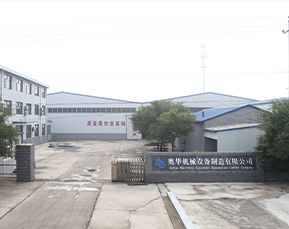 Afrikaans
Afrikaans  Albanian
Albanian  Amharic
Amharic  Arabic
Arabic  Armenian
Armenian  Azerbaijani
Azerbaijani  Basque
Basque  Belarusian
Belarusian  Bengali
Bengali  Bosnian
Bosnian  Bulgarian
Bulgarian  Catalan
Catalan  Cebuano
Cebuano  Corsican
Corsican  Croatian
Croatian  Czech
Czech  Danish
Danish  Dutch
Dutch  English
English  Esperanto
Esperanto  Estonian
Estonian  Finnish
Finnish  French
French  Frisian
Frisian  Galician
Galician  Georgian
Georgian  German
German  Greek
Greek  Gujarati
Gujarati  Haitian Creole
Haitian Creole  hausa
hausa  hawaiian
hawaiian  Hebrew
Hebrew  Hindi
Hindi  Miao
Miao  Hungarian
Hungarian  Icelandic
Icelandic  igbo
igbo  Indonesian
Indonesian  irish
irish  Italian
Italian  Japanese
Japanese  Javanese
Javanese  Kannada
Kannada  kazakh
kazakh  Khmer
Khmer  Rwandese
Rwandese  Korean
Korean  Kurdish
Kurdish  Kyrgyz
Kyrgyz  Lao
Lao  Latin
Latin  Latvian
Latvian  Lithuanian
Lithuanian  Luxembourgish
Luxembourgish  Macedonian
Macedonian  Malgashi
Malgashi  Malay
Malay  Malayalam
Malayalam  Maltese
Maltese  Maori
Maori  Marathi
Marathi  Mongolian
Mongolian  Myanmar
Myanmar  Nepali
Nepali  Norwegian
Norwegian  Norwegian
Norwegian  Occitan
Occitan  Pashto
Pashto  Persian
Persian  Polish
Polish  Portuguese
Portuguese  Punjabi
Punjabi  Romanian
Romanian  Russian
Russian  Samoan
Samoan  Scottish Gaelic
Scottish Gaelic  Serbian
Serbian  Sesotho
Sesotho  Shona
Shona  Sindhi
Sindhi  Sinhala
Sinhala  Slovak
Slovak  Slovenian
Slovenian  Somali
Somali  Spanish
Spanish  Sundanese
Sundanese  Swahili
Swahili  Swedish
Swedish  Tagalog
Tagalog  Tajik
Tajik  Tamil
Tamil  Tatar
Tatar  Telugu
Telugu  Thai
Thai  Turkish
Turkish  Turkmen
Turkmen  Ukrainian
Ukrainian  Urdu
Urdu  Uighur
Uighur  Uzbek
Uzbek  Vietnamese
Vietnamese  Welsh
Welsh  Bantu
Bantu  Yiddish
Yiddish  Yoruba
Yoruba  Zulu
Zulu V-Belt Tensioner Pulley System for Optimal Engine Performance and Durability
Understanding V-Belt Tensioner Pulleys
V-belt tensioner pulleys are critical components within many automotive and industrial machinery systems. Their primary function is to maintain the appropriate tension on the V-belts that drive various accessories and components, such as alternators, water pumps, power steering pumps, and air conditioning compressors. This article takes a closer look at the importance of V-belt tensioner pulleys, how they work, and some key considerations when selecting or maintaining them.
Functionality of V-Belt Tensioner Pulleys
V-belt tensioner pulleys operate on a simple but effective principle. The tensioner uses a spring-loaded mechanism that automatically adjusts the tension on the belt. By maintaining constant tension, the pulley ensures that the belt does not slip or wear prematurely. Proper tension is crucial because insufficient tension can lead to belt slippage, reduced efficiency, increased noise, and ultimately, premature belt failure.
When a vehicle's engine starts, components that draw power from the drive belts require sufficient grip to function correctly. If the belt is too loose, it may slip off the pulley system, while excessive tension can strain the belt and associated components, leading to wear and tear. The tensioner pulley effectively balances the tension, contributing to the longevity and performance of the belt system.
Types of V-Belt Tensioner Pulleys
There are several types of V-belt tensioner pulleys, each designed for specific applications. The most common types include
1. Spring-loaded Tensioners These are equipped with a spring mechanism that allows them to adjust automatically to changes in belt length due to wear or temperature variations. They are widely used in automotive applications due to their reliability and maintenance-free operation.
2. Fixed Tensioners These tensioners have set tension and do not adjust automatically. They are less common in modern vehicles but can be found in older models or specific machinery where a manual adjustment is necessary.
3. Hydraulic Tensioners These utilize hydraulic fluid to maintain tension on the belt. They are typically found in high-performance applications where precise tension management is critical.
4. Idler Pulleys Although primarily designed to guide and support the belt, idler pulleys can also play a tensioning role in certain systems. They help to maintain the correct path of the belt and can assist with tension adjustments.
Selecting the Right Tensioner Pulley
When choosing a V-belt tensioner pulley, several factors must be considered to ensure optimal performance and longevity.
v belt tensioner pulley

1. Compatibility Ensure the tensioner pulley is compatible with both the engine specifications and the belt type being used. Mismatched components can lead to operability issues and increase the risk of failure.
2. Quality and Material Select a pulley made from high-quality materials, such as durable plastics or metals designed to withstand wear and thermal expansion. A well-constructed pulley minimizes vibration and improves the overall efficiency of the belt drive system.
3. Maintenance Some tensioner pulleys require more maintenance than others. For example, while spring-loaded options are generally maintenance-free, hydraulic tensioners may need periodic checks for fluid levels and potential leaks.
4. Installation Ensure that you follow the manufacturer’s instructions during installation. Improper installation can lead to premature wear and functionality issues.
Maintenance Tips
Regular maintenance of V-belt tensioner pulleys is essential for ensuring the longevity and performance of the belt drive system. Some practical tips include
- Check for Wear Regularly inspect the tensioner pulley and the belt for signs of wear, such as cracks, fraying, or glazing, which may indicate it’s time for replacement.
- Listen for Noise Unusual noises, such as squeaking or grinding from the engine compartment, could signal an issue with the tensioner pulley or belt. Address these sounds promptly.
- Periodically Adjust For fixed tensioners, it may be necessary to manually adjust the tension over time, especially after significant mileage or use.
- Seek Professional Help If you encounter any difficulty or uncertainty regarding the tensioner pulley system, consulting a professional mechanic is advisable to ensure safe and effective operation.
Conclusion
In conclusion, V-belt tensioner pulleys are essential for the smooth operation of many mechanical systems. Their ability to maintain proper tension on belts directly affects performance, efficiency, and durability. By understanding the different types of tensioners, their functionality, and the importance of proper maintenance, users can make informed decisions and help ensure their machinery operates optimally for years to come.
-
Revolutionizing Conveyor Reliability with Advanced Rubber Lagging PulleysNewsJul.22,2025
-
Powering Precision and Durability with Expert Manufacturers of Conveyor ComponentsNewsJul.22,2025
-
Optimizing Conveyor Systems with Advanced Conveyor AccessoriesNewsJul.22,2025
-
Maximize Conveyor Efficiency with Quality Conveyor Idler PulleysNewsJul.22,2025
-
Future-Proof Your Conveyor System with High-Performance Polyurethane RollerNewsJul.22,2025
-
Driving Efficiency Forward with Quality Idlers and RollersNewsJul.22,2025





























